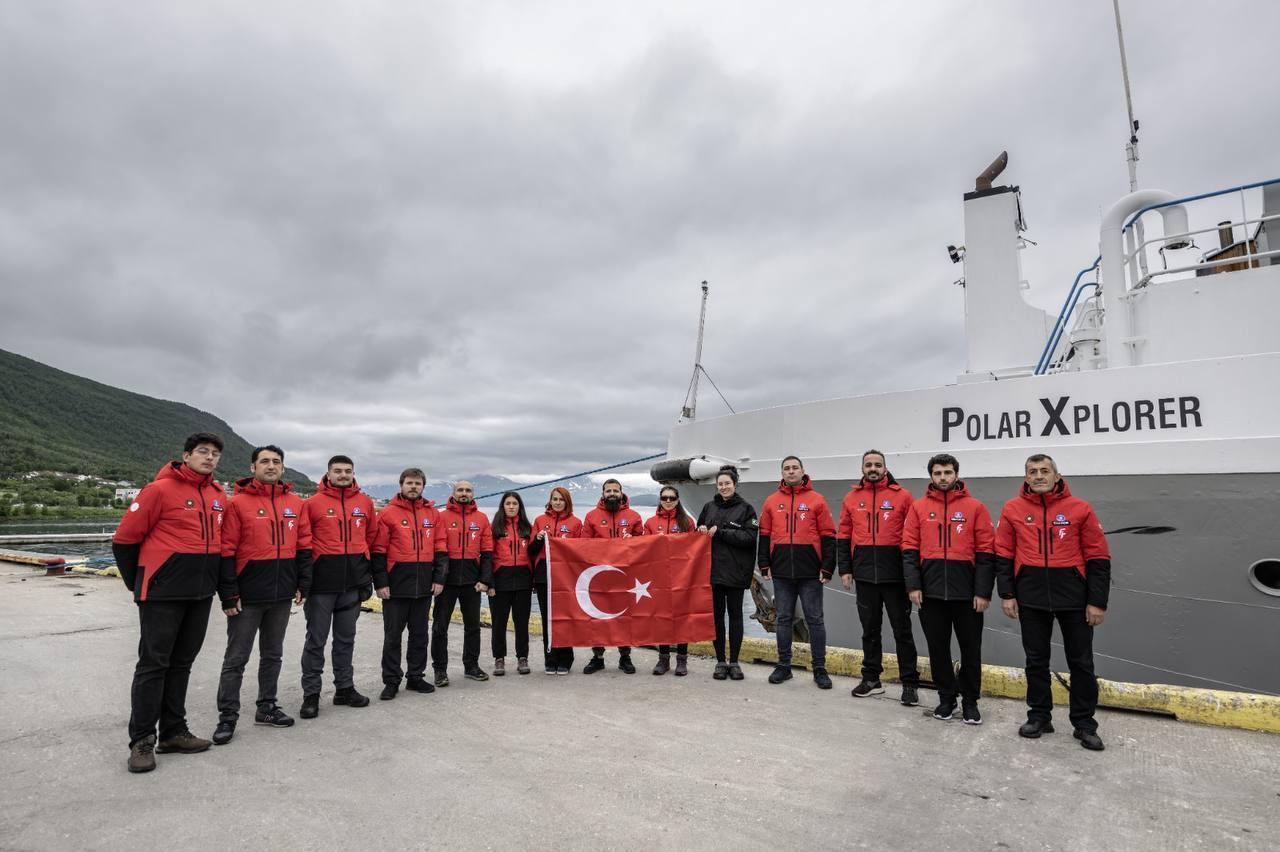Scientific delegation returns from arctic expedition
ISTANBUL

A scientific delegation consisting of 11 members, including foreign scientists, has concluded its month-long journey as part of the third National Arctic Scientific Research Expedition.
The team, under the stewardship of the Industry and Technology Ministry and overseen by the Turkish Technological and Scientific Research Council (TÜBİTAK), reached the sea ice boundary at 81 degrees north latitude aboard the Norwegian-flagged research vessel, PolarXplorer.
According to TÜBİTAK's statement, the mission marked a significant achievement in international collaboration, as it marked the first cooperative endeavor stemming from the 2022 memorandum of understanding between the Brazilian Science, Technology and Innovation Ministry and TÜBİTAK.
During the expedition, which took place against the backdrop of the Arctic's highest recorded average temperature, the scientific team conducted a comprehensive array of studies aimed at gaining a deeper comprehension of the climate changes occurring in the region. The researchers meticulously sampled and measured at 28 distinct locations, covering a diverse range of scientific subjects.
The research endeavors spanned across 14 distinct projects, encompassing domains such as marine and life sciences, the adaptation of ecosystems to the Arctic environment, the study of marine life including fish and other sea creatures, phytoplankton research, as well as the identification of anthropogenic pollutants in the Arctic seas.
Additionally, the team's scientific pursuits encompassed investigations into sea water's physical properties, microplastics, atmospheric pollution, meteorological patterns, environmental effects, periodic evaluation of emerging trade routes, observation of sea ice dynamics and the tracking of marine mammals.
The expedition, covering approximately 5,500 kilometers, led the team to explore the sea ice originating at 81 degrees north latitude, glaciers undergoing transformations due to climate shifts, the Svalbard archipelago and the Barents Sea.
Throughout their voyage, the scientists were privileged to encounter an array of wildlife, including humpback and Minke whales, dolphins, various seal species, walruses and even polar bears. Additionally, the team observed numerous species of birds during their cruise.
Amidst their explorations, the delegation visited a variety of polar research stations, including the Polish Polar Research Station, Russian research stations in Barentsburg, the former Russian mining town of Pyramiden and the Korean base in Ny Alesund. In a demonstration of international camaraderie, the team also delivered samples for Italian researchers to the Italian research station.
As the expedition drew to a close, the scientific team partook in a brief visit to Ny-Alesund, a settlement boasting 12 research stations representing different countries. There, the researchers posed for a group photograph in front of the statue commemorating Norwegian Explorer Roald Amundsen, the first person to reach both the North and South Poles.
















